This is a series of posts leading up to the season preview which will be posted sometime next week. This post will look at the number one and number two starters for each team in the NL West (other than the Giants, since these posts will concentrate more on what the Giants will be facing in 2010 in various categories).
One thing to note about these posts is that I'm not looking specifically at the number one or number two pitchers in the rotation according to MLB.com depth charts. Rather, what I am looking at (and more concerned about as a Giants fan) are the two best pitchers on each NL West squad. For example, if you used the Giants as an example, the starting rotation may look like this: Tim Lincecum (no.1), Barry Zito (no.2), Matt Cain (no.3), Jonathan Sanchez (no.4), and Todd Wellemeyer/Kevin Pucetas (no.5).
(Note: I didn't put Madison Bumgarner in the fifth spot because he got optioned today. However, I do feel Bumgarner will be the fifth starter at some point this year, since I don't trust that Wellemeyer or Pucetas will be as good in the regular season as they have been in Spring Training.)
Now, would everyone consider Barry Zito the second-best pitcher on the Giants roster? Of course not. Thus, you have to use the same reasoning with the no.1 and no.2 starters on the other NL West squads. Is Chris Young a possible Opening Day starter? Could be. Is he the team's best pitcher? I would argue against that (he's probably the third, maybe even fourth best pitcher on the Padres at this moment in my opinion).
So, let's take a look around the NL West and the team's top of the rotation pitchers.
Arizona Diamondbacks:
Dan Haren and Edwin Jackson
Why Giants Fans Should Fear Haren
Haren's stats against the Giants in 2009: three games, 0-2 W-L, 3.79 ERA, 1.158 WHIP, 9.0 K/9, 9.50 K/BB.
Sure, Haren went 0-2 (with one no-decision) against the Giants in 2009. However, if it were not for lackluster offense on the Diamondbacks' end (or great pitching by the Giants starters...you can choose which one) then Haren could have easily went 3-0 against San Francisco last season.
While he finished a distant fourth for the NL Cy Young behind Cardinals Adam Wainwright and Chris Carpenter, and repeat winner Tim Lincecum (collective yeah! by Giants nation), Haren for the most part was in the running in the race until the last couple of months. Haren posted ERA numbers of 4.95 and 4.79 in August and September/October (he didn't post an ERA higher than 3.50 prior to August), along with WHIP numbers of 1.23 and 1.31 (he didn't have a WHIP higher than 1.06 prior to August).
Now, those numbers aren't terrible. They didn't get him the Cy Young, but they shouldn't deter Giants fans from believing Haren is anything less than a Big-Time Major League ace.
Haren has a lot to offer as a pitcher. In his tenure in Arizona, Haren has shown unbelievable control and command, as evidenced by his K/BB ratios. In 2008 with the Diamondbacks, he posted a K/BB ratio of 5.15. In 2009, he increased that number to 5.87. (To put it in perspective, the league average K/BB ratio for pitchers is around two).
How does Haren gets guys out? He has a solid, four-pitch repertoire, with all of his pitches having positive value in 2009 according to Fangraphs. Last season, Haren's money pitch was his cutter, as the pitch was worth 17.8 runs above average (e.g. he saved the Diamondbacks 17.8 runs last year with this pitch, according to Fangraphs). His fastball and split also proved to be effective as well, evidenced by his 9.3 and 9.0 runs above average ratios on these pitches.
The crazy thing about Haren is that he doesn't have incredible stuff. His fastball only averaged 90.6 MPH and it only topped out at 95 MPH on a couple of occasions last season. That being said, he mixes up his pitches well (probably due to the fact that he is very effective with all four of them). He only threw his fastball 45.7 percent of the time (the league average is 53.0 percent) and threw his cutter 23.3 percent of the time, his curve ball 18 percent of the time and his split finger 13 percent of the time. That kind of confidence in his secondary pitches show that Haren is not a one-trick pony, and is a tough guy to hit against, mainly because he can beat you in a variety of ways.
Haren may not have one the Cy Young last season. However, if he continues to stay in form like he did in 2008 and 2009, and his hitting comes around, it would not be surprising to see Haren snatch the award away from Lincecum in 2010.
Why Giants Fans Should Fear Jackson
Numbers in Detroit in 2009: 13-9 W-L, 3.62 ERA, 1.26 WHIP, 6.77 K/9, 2.30 K/BB.
Why did I list Jackson over Brandon Webb? Mainly because Webb probably won't return until late-April, and I am curious to see if Webb will be his old self when he returns to pitching after missing most of 2009 due to injury. So, I'm going with Jackson, who is expected to be ready to go once the 2010 season starts for the Diamondbacks.
However, that should not make Giants fans overlook Jackson.
Jackson, an All-Star in 2009 with the Tigers, has tremendous potential and finally delivered after years of hype when he was in the Dodgers' organization. Jackson has tremendous stuff and velocity (he averaged 94.5 MPH on his fastball), and last season he made great strides by cutting down his walk rate (to 2.94, the lowest walk rate of his career). Add that with increases in his strikeout rate and K/BB ratio (6.77 and 2.30 respectively) from 2008, and Jackson proved that he has all the makings of a potential top-of-the-rotation guy.
Is Jackson a bonafide ace at this moment? Unfortunately, now. Despite solid numbers in Detroit, his FIP (4.28) was less than flattering, and he benefited from a generously low BABIP (.281, the lowest number in that category since his rookie year in 2003 where he only pitched four games). It is unlikely that he'll post numbers that low again, even if he is making a transition from the American to the National League.
That being said, the Giants and Giants fans should not sleep on Jackson, even if Webb comes back to Arizona's rotation healthy. He could be to the Diamondbacks rotation what Matt Cain is to the Giants' (thus, explaining why I wrote that piece comparing Jackson and Cain a while ago).
Scare factor: 8.5 (potentially 9 if Webb's healthy) out of 10. (Jackson could be boom or bust, but Haren is the real deal and provides plenty of scare and worry to Giants fans. Also, if Webb comes back healthy and in old-form, then this rotation just got a whole lot scarier.)
Colorado Rockies
Ubaldo Jimenez and Jorge De La Rosa
Why Giants Fans Should Fear Jimenez
Jimenez's stats against the Giants in 2009: 5 games, 2-3 W-L, 3.98 ERA, 1.232 WHIP, 8.5 K/9, 3.00 K/BB.
Jimenez is the ace for the Rockies staff. Maybe ten years ago that was Mike Hampton and that didn't mean much considering it was home run derby every game played at Coors Field back then. Now though, being the ace of the Rockies is not a dubious honor. In fact, it actually means something nowadays considering the Rockies are a serious contender in the National League and the favorite to win the NL West in my book. (Or are they? Sorry don't want to spoil my NL West season preview.)
Jimenez is no Hampton. Jimenez is no Jamey Wright. Jimenez is the real deal with serious stuff, and last year he showed some serious success. (I like to say serious, don't I?)
In 2009, Jimenez went 15-12, not a great record, but his other numbers are much more impressive. His ERA was 3.47 and his FIP (fielding independent pitching on an ERA scale) was 3.36. Furthermore, he posted a strikeout rate of 8.17 (the highest of his Major League career) and a K/BB ratio of 2.33. His WHIP was also the league average (which is 1.39) at 1.23 and his BABIP wasn't just a little over 10 points under the league average at .290 (so he wasn't extraordinarily lucky by any measure in comparison to Jackson from Arizona).
What makes Jimenez so dangerous? His ability to throw the high heat.
The 26-year-old right hander throws gas, plain and simple, no questions asked. His fastball averaged 96.1 MPH last year and it actually touched the 100 MPH range according to Pitch F/X velocity charts on Fangraphs.
Yet the fastball isn't the only pitch in the Rockies ace's repertoire. Last season, Jimenez showed a solid ability to mix up his pitches as evidenced by him throwing his slider 17.8 percent of the time and his change 11.5 percent of the time. The secondary pitches also packed punch. His slider had a value of 15 runs above average and his changeup had a value of 9.6 runs above average (his fastball had a value of 11.4 runs above average in comparison).
Jimenez may not be a big name in comparison Haren from Arizona, but make no mistakes about it. Jimenez could be a serious dark horse to challenge for the Cy Young should he continue to improve like he did in 2009.
Why Giants Fans Should Fear Jorge De La Rosa
De La Rosa's stats against the Giants in 2009: 3 stars, 3-0 W-L, 3.38 ERA, 0.984 WHIP, 8.9 K/9, 7.00 K/BB.
Here is the equation that could summarize the Giants against De La Rosa last year:
De La Rosa + Giants offense = Rockies win.
Ergo, visa vi, concordingly...De La Rosa owned the Giants hitters in 2009.
I watched every start De La Rosa had against San Francisco last year, and there was no doubt in my mind how good the guy was. Basically, he is Jonathan Sanchez, only if Sanchez had better control and more velocity on the fastball (and had a better mental makeup than Sanchez...and had more wins...and had more run support...I could go on forever really). With a fastball that averages 93.3 MPH, De La Rosa has some solid gas behind his pitches. Additionally, he can mix it up well. In 2009, he threw his slider 15.3 percent of the time and changeup 17.0 percent of the time. His slider and chanegup proved to be his most effective pitches, as he had a value of 3.4 runs above average and 8.1 runs above average on them, respectively.
The most intriguing aspect of De La Rosa's pitching though is his ability to make bats miss. Last year, hitters only made contact against De La Rosa 74.8 percent of the time. To put things in perspective, the league average contact rate is 80.5 percent and Jimenez, the ace of the Rockies, had a contact rate of 77.3 percent.
What does that show? De La Rosa has the makings of a real strikeout artist (which already somewhat rings true as evidenced by his 9.39 strikeout rate). If De La Rosa can lower his walk (4.04 BB/9) and WHIP numbers (1.38) from 2009, don't be surprised to see De La Rosa on the NL All-Star roster next July.
Scare factor: 9 out of 10 (They play in Coors Field unfortunately, but considering they are strikeout pitchers, they have the ability to succeed where pitchers like Hampton, Shawn Estes and Darryl Kile failed. If they continue to improve, and can get some improvement from their defense behind them, Jimenez and De La Rosa could be the answer to the Giants' Lincecum-Cain one-two punch.)
Los Angeles Dodgers
Chad Billingsley and Clayton Kershaw
Why Giants Fans Should Fear Billingsley
Billingsley's stats against the Giants in 2009: 5 games (4 starts) , 1-2 W-L, 3.67 ERA, 1.556 WHIP, 10.0 K/9, 3.33 K/BB.
Billingsley is a very interesting pitcher. There is no doubt the guy has the ability to strike hitters out. Last year he posted a 8.21 strikeout rate, and that was his lowest K/9 rate since his rookie season in 2006 (where it was 5.90). Additionally, Billingsley can also make hitters miss (75.9 contact rate in 2009) and his FIP (3.82 in 2009) actually suggests that he may not have been as bad a pitcher as he looked to be back in July and September/October where he was posting ERA numbers of 7.52 and 5.16, respectively and and WHIP numbers of 1.52 and 1.48, respectively.
So what's Billingsley's problem? Well, he has trouble finding the strike zone.
Last year, his walk rate was high at 3.94 and he only posted a K/BB ratio of 2.03. He was especially bad against the Giants: despite having a K/9 rate of 10, he only posted a 3.33 K/BB ratio.
Billingsley's control is very puzzling, mainly because he doesn't throw incredibly hard (his fastball average 91.8 MPH last year) and he mixes up his pitches well. He throws his cutter 23.2 percent of the time and his curve 23.1 percent of the time, thus showing that he has confidence in a few pitches.
However, in tight situations, Billingsley struggled last year. In high leverage situations, he posted a K/BB ratio of 0.93 and a FIP of 5.26. Those numbers look very bad, especially when you compare them to battery mate Kershaw, who posted a K/BB ratio of 2.33 and a FIP of 3.74 in high leverage situations.
There is no doubt Billingsley has the tools to be a great pitcher. He has three pitches he can throw with consistency, he induces a good amount of groundballs (1.25 GB/FB rate last year, 1.58 in 2008), and he can make hitters miss, as evidenced by his strikeout rates and contact rates.
That being said, unless Billingsley performs better in tougher situations, and solves his walk issues, Billingsley will never be the ace he was hyped up to be when he was drafted by Dodgers in the first round in 2003.
Why Giants Fans Should Fear Kershaw
Kershaw's stats against the Giants in 2009: 1 start, 7 IP, 1 H, 1 R, 1 ER, 1 BB, 13 K, No-Decision.
You can thank the Dodgers bullpen for blowing Kershaw's wonderful performance against the Giants. Yet, bad start and all, you can say one thing about Kershaw:
This...kid...can...pitch.
Seriously, he just turned 22, and he may be the Dodgers best pitcher on staff come Opening Day. Now, I know you can be pessimistic (and I like to be with the Dodgers) and say the Dodgers starting rotation is pretty mediocre, but I'll take the high road and say that Kershaw is a gem in the rough that get overshadowed by the big name starters in the NL West such as Lincecum, Haren, Cain and even Jimenez and De La Rosa.
However, you can't ignore Kershaw, despite his mediocre record (8-8) in 2009.
For starters, Kershaw has an extraordinary ability to strike guys out. In 2009, he posted a strikeout rate of 9.74 and hitters only made contact against Kershaw 76.7 percent of the time. What the secret to his success? He has got some incredibly stuff behind his pitches, especially his fastball. His fastball averaged 93.9 MPH last year, but it was common to see his fastball hover around the 95-6 MPH range. Furthermore, he had tremendous value behind his fastball as well (illustrated by the pitch having a value of 30.0 runs above average).
Granted, people expecting Kershaw to be the Dodgers answer to Lincecum have to keep things in perspective. For starters, he's still young, and despite solid ERA numbers last year (2.79) as well as FIP numbers (3.08), his K/BB numbers leave a little to be desired (2.03, hurt by a 4.79 walk rate in 2009). In addition, Kershaw is a pretty two-dimensional pitcher. He threw his fastball 71.7 percent of the time and the only pitch he threw more than 10 percent of the time was his curve ball (17.1 percent of the time).
If Kershaw wants to be an ace in this league, he's going to have to develop a third pitch, or else Major League hitters will catch up on him pretty quickly.
Scare factor: 7 out of 10 (Billingsley and Kershaw are two young, scary, promising pitchers, but they don't impress in comparison to what Colorado and Arizona have to offer. If Kershaw can develop an effective third pitch, and if Billingsley can get his walk issues under control, this duo could surprise, especially considering the offensive lineup they are pitching with.)
San Diego Padres
Kevin Correia and Jon Garland
Why Giants Fans Should Fear Correia
Correia's stats against the Giants in 2009: 4 games, 1-1 W-L, 3.75 ERA, 1.292 WHIP, 5.6 K/9, 5.00 K/BB.
The former Giant made his old team pay in 2009. In four games, Correia went 1-1 and posted a solid 3.75 ERA and 1.292 WHIP.
However, it was just the Giants Correia succeeded against. He also managed to have a solid year overall, as shown by his 3.91 ERA, 3.81 FIP, 1.30 WHIP, and 2.22 K/BB ratio (helped by a 6.45 strikeout rate).
Now, Correia doesn't have intimidating stuff. His fastball only average 91.1 MPH and it topped out over 95 MPH just once in 2009 according to his velocity graphs. Yet Correia succeeded with Padres in 2009 because a.) he didn't walk too many guys (his walk rate was 2.91) and b.) he improved in terms of inducing groundballs.
In regard to the former, the walk numbers were a surprise. The lowest walk rate numbers Correia posted prior to 2009 was in 2006 with the Giants at 2.54. That being said, those walk numbers came as a reliever and he pitched almost 129 more innings in 2009 than in 2006, so his 2009 walk rate numbers are a lot more impressive than his 2006 ones.
As for the latter point, you could attribute Correia's success in inducing more groundballs and allowing less line drives (his groundball rate increased from 38.2 percent in 2008 to 44.8 in 2009, and his line drive rate fell from 24.9 percent in 2008 to 19.2 percent in 2009) to his change in pitch variety. In his first year as a starting pitcher at the Major League level, Correia primarily threw three pitches: a fastball (which he threw 60 percent of the time), slider (which he threw 27.2 percent of the time), and changeup (which he threw 9.2 percent of the time).
In his second year as a starting pitcher with the Padres, Correia threw his fastball less (only 51.7 percent of the time) and his secondary pitches more. He threw his slider 30.2 percent of the time, his curve ball and 10.5 percent of the time, and his changeup 5.8 percent of the time. Thus, Correia found success by having a solid pitch variety something he didn't do as a reliever and spot starter back in San Francisco.
Can Correia repeat his 2009 success in 2010? It's tough to tell because his stuff isn't awesome. However, if he can continue to improve his GB/FB rates, it isn't out of the question to think that Correia could be an underrated ace in the NL West.
Why Giants Fans Should Fear Jon Garland
Garland's stats against the Giants in 2009: 2 games, 1-0 W-L, 2.35 ERA, 1.239 WHIP, 2.9 K/9, 2.50 K/BB.
Garland isn't an intimidating pitcher by any means. He is up there in age (he's 30), and he isn't the kind of pitcher known for striking guys out (his strikeout rate has topped five three times: 5.07 in 2003, 5.23 in 2002, and 5.43 in 2000, all with the White Sox). Yet Garland finds moderate success as a Major League pitcher because he doesn't walk guys. Since 2005, his walk rate hasn't been over 2.70.
Despite solid walk rates, it really hasn't transitioned to success in his other statistical categories. His FIP wasn't impressive (4.48) and neither was his WHIP (1.40). Garland has a tendency to induce groundballs as a pitcher, but even then, it's hit or miss at-times. While he induced good groundball numbers in 2008 and 2009 (1.79 and 1.31, respectively), they were less than stellar in 2006 and 2007 (1.12 and 1.04, respectively).
Garland can mix it up with his pitches, which is necessary considering his mediocre velocity (he averaged 89.7 MPH on his fastball last year). However, while he has up to six different pitches, he only throws two of them with any confidence (only his cutter and change were thrown over 10 percent of the time).
There is not a lot to like about Garland. That being said, he is a serviceable and dependable pitcher that will eat innings (he has thrown 190-plus innings since 2002) and put up decent, though not spectacular numbers. Considering a lot of pitchers on the Padres have suffered from inconsistency (Chris Young and Clayton Richard come to mind), a guy like Garland isn't bad to have in this rotation.
Scare factor: 4.5 out of 10 (Correia is a good pitcher on this Padres team, but he'd be a third or fourth starter on any other NL West squad. Garland is good, but he won't strike fear into anybody. Richard has some potential, but it hasn't been proven consistently. For now, this Padres rotation is pretty mediocre.)
Tuesday, March 23, 2010
"Giants" Enemy Lines: A Look at the NL West's One-Two Starting Pitchers
Labels:
2010,
nl west,
Pitching Rotation,
San Francisco Giants,
season preview
Subscribe to:
Post Comments (Atom)




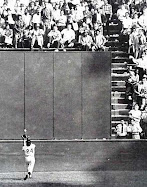
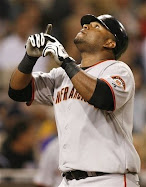
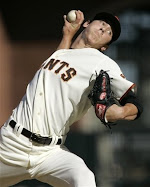
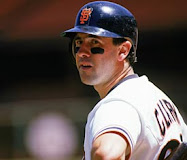
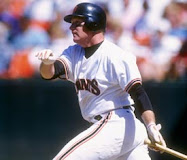
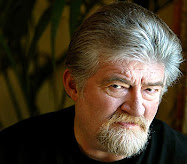

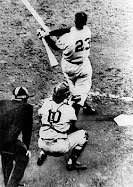
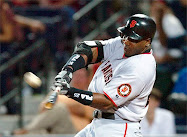
No comments:
Post a Comment